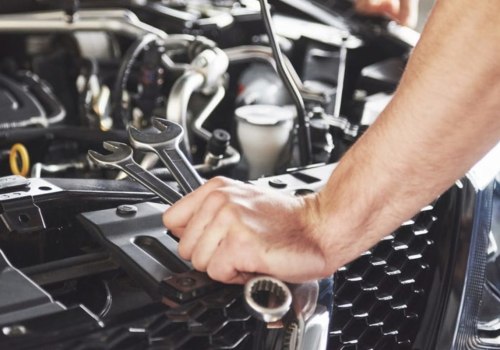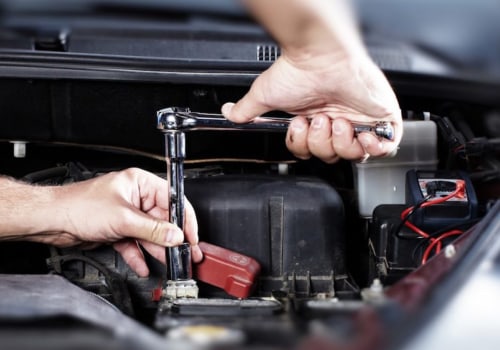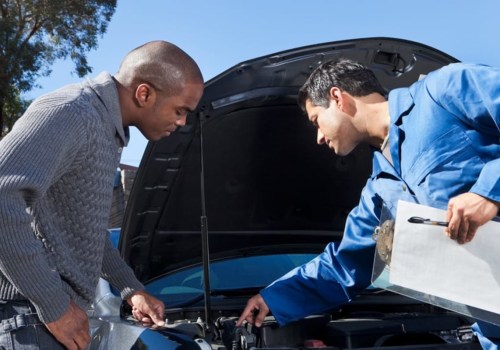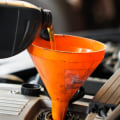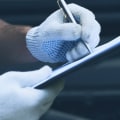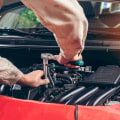Imagine spending hours detailing your car, only to stumble upon a series of scratches, some of which you may have inflicted yourself. A few hints of choice escape your lips, as you realize that no amount of polish seems to dissolve the damage. We hate to say it, but chances are those paint scratches are more than just a clearcoat, and now you need to figure out how to fix them. Go online and you'll find that there are plenty of creative DIY solutions for those looking to repair scratches on plastic and clear coated surfaces.
Some of these approaches are quite well thought out and effective, while others sit on the half-cooked end of the marijuana brownie leaf. In the information below, we'll identify the four main types of paint scratches, as well as some approaches that will actually fix them, along with some suggestions for when it might be time to throw in the towel and call a professional. Every automotive paint scratch is unique in its own way and therefore requires different levels of preparation, care and repair. Even scratches that look identical can have varying degrees of paint mutilation, it is simply difficult to determine the extent of the damage because it hides beneath the surface. Automotive scratches can range from clear clearcoat imperfections and small chips in wax coatings and paint sealants, to full-blown metal cuts of catastrophic proportions. Resting somewhere in between are spider web scratches, which can often be found etched into a clear coat, with more extreme cases penetrating the paint itself.
Every time the exterior of a car is scratched, it is made with a material that is harder or sharper than the area it is spoiling. While size and shape definitely have an impact on the level of repair required, it is the depth of the scratch that determines the solution. For example, if you have a scratch on a headlight cover, it probably didn't take much force to get there. Unlike vehicles of yesteryear, modern headlight covers are not made of glass, but are based on a polycarbonate plastic construction. This makes today's headlights incredibly crack resistant, but also susceptible to things like UV damage and surface scratches.
To determine which repair option is best suited for the scratch in question, we've put together the four most common types of paint scratches and included some details on each one. Although all of the scrapes listed below are repairable, you will find that the level of restoration required will vary depending on the severity of the scratch itself.
Clearcoat Surface Scratches
The most common and easily repairable automotive exterior scratch is clearcoat surface scratch. Not to be confused with “paint spider web” and other forms of fracture, thin clearcoat stains don't take long to form, and are usually caused by things like poor car wash practices and tiny drying materials. Rough or dirt-filled sponges, gloves and cleaning cloths can quickly cause scratches to materialize on the surface of the clearcoat and, when rubbed in a circular pattern, can create what are known as “swirl marks”.That's why it's important to always use a clean detailing cloth or wash mitt, and never buy the cheapest car wash sponge off the shelf. To eliminate this form of paint wear, a polishing method known as paint correction must be implemented, which sounds much more intimidating than it actually is. The process involves wetting both the scratch and sandpaper before lightly sanding until the finish looks dull and the scratch is no longer evident. Then wipe the surface with a microfiber towel before applying rubbing compound. Spray the rubbing compound onto a polishing pad and spread it with the pad before buffing out any remaining residue.
Clearcoat Penetrating Scratches
If a scratch penetrates the clearcoat, it is very likely that it has also embedded itself in the paint.This level of scratching occurs when DIY solutions start to come out the window, as they cannot be polished. Scratches of this caliber often occur when something like another car's bumper or guardrail crawls along your painted surfaces. When the scratch goes through the paint, it becomes extremely difficult to repair, at least from a DIY perspective. While treating these scratches with a quick paint repair solution such as a “touch-up pen” may seem tempting, scratches of this nature will often remain visible even after filling them with paint of the same color. Even if you don't notice the paint-filled scratch at first glance chances are you can feel it so expect to spend some decent dough or a good amount of time and effort on this solution. When metal is exposed to elements contaminants begin to form that lead to corrosion and oxidation which only worsen when precipitation joins in.
Once wet weather sets in it's only a matter of time before these unwanted killers invite even more evil characters like rust to come visit.
Sanding Deeper Scratches
If you can determine that the scratch has gone through both your clearcoat and your paint then sanding may be your only option for repair. Sanding down deeper scratches requires removing both your clearcoat around them as well as any surrounding paint which needless to say is far beyond beginner DIY territory. While it's possible to repair scratches of this magnitude on your own familiarity with car body work is crucial for getting this level of scratch blending seamlessly with your environment without scratches. You'll also find that heavy-gauge primers and body putty often need to be used in deeper grooves followed by wet sanding and complete zone reapplication.When To Call A Professional
So if this seems like something out of your command house then it's most likely not something you should tackle on your own. When dealing with deeper scratches or metal cuts then calling an experienced professional may be your best bet for getting your car back into pristine condition. No matter what type of automotive exterior scratch you're dealing with there's always an option for repair whether it's DIY or professional help.With some patience dedication and knowledge you can get your car looking like new again without breaking your bank account.
